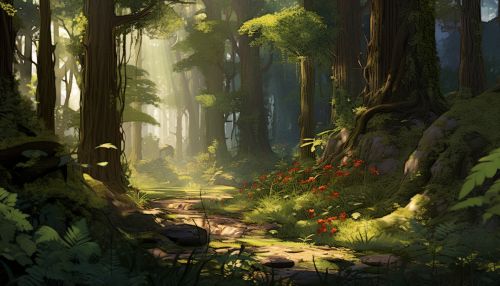Congo Rainforest
Overview
The Congo Rainforest is one of the most significant ecological regions on the planet. It is the world's second-largest tropical rainforest, surpassed only by the Amazon Rainforest. Located in Central Africa, it spans across six countries: Cameroon, Central African Republic, Democratic Republic of the Congo, Republic of the Congo, Equatorial Guinea, and Gabon. The Congo Rainforest is known for its high levels of biodiversity, including numerous unique species of plants, birds, and mammals.


Geography and Climate
The Congo Rainforest is situated in the basin of the Congo River, the second-longest river in Africa. The region's climate is characterized by high temperatures and heavy rainfall throughout the year, with an average annual temperature of 27 degrees Celsius and annual rainfall exceeding 2000 mm. This tropical climate, combined with the basin's fertile soils, provides ideal conditions for the growth of dense and diverse vegetation.
Biodiversity
The Congo Rainforest is home to an estimated 10,000 species of tropical plants, 30% of which are unique to the region. It also hosts a wide variety of animal species, including more than 400 species of mammals, 1,000 species of birds, and 700 species of fish. Among its most iconic inhabitants are the African Forest Elephant, the Bonobo, and the Western Lowland Gorilla.
Ecosystem Services
The Congo Rainforest provides numerous ecosystem services that are crucial for both local communities and the global environment. These include carbon sequestration, water filtration, soil conservation, and provision of food and medicinal plants. The forest's role in carbon sequestration is particularly significant, as it helps mitigate the effects of climate change by absorbing large amounts of carbon dioxide from the atmosphere.
Threats and Conservation
Despite its ecological importance, the Congo Rainforest faces several threats, including deforestation, illegal wildlife trade, and climate change. Efforts to conserve the forest are being made at both local and international levels, with initiatives focusing on sustainable forestry practices, wildlife protection, and community-based conservation strategies.
